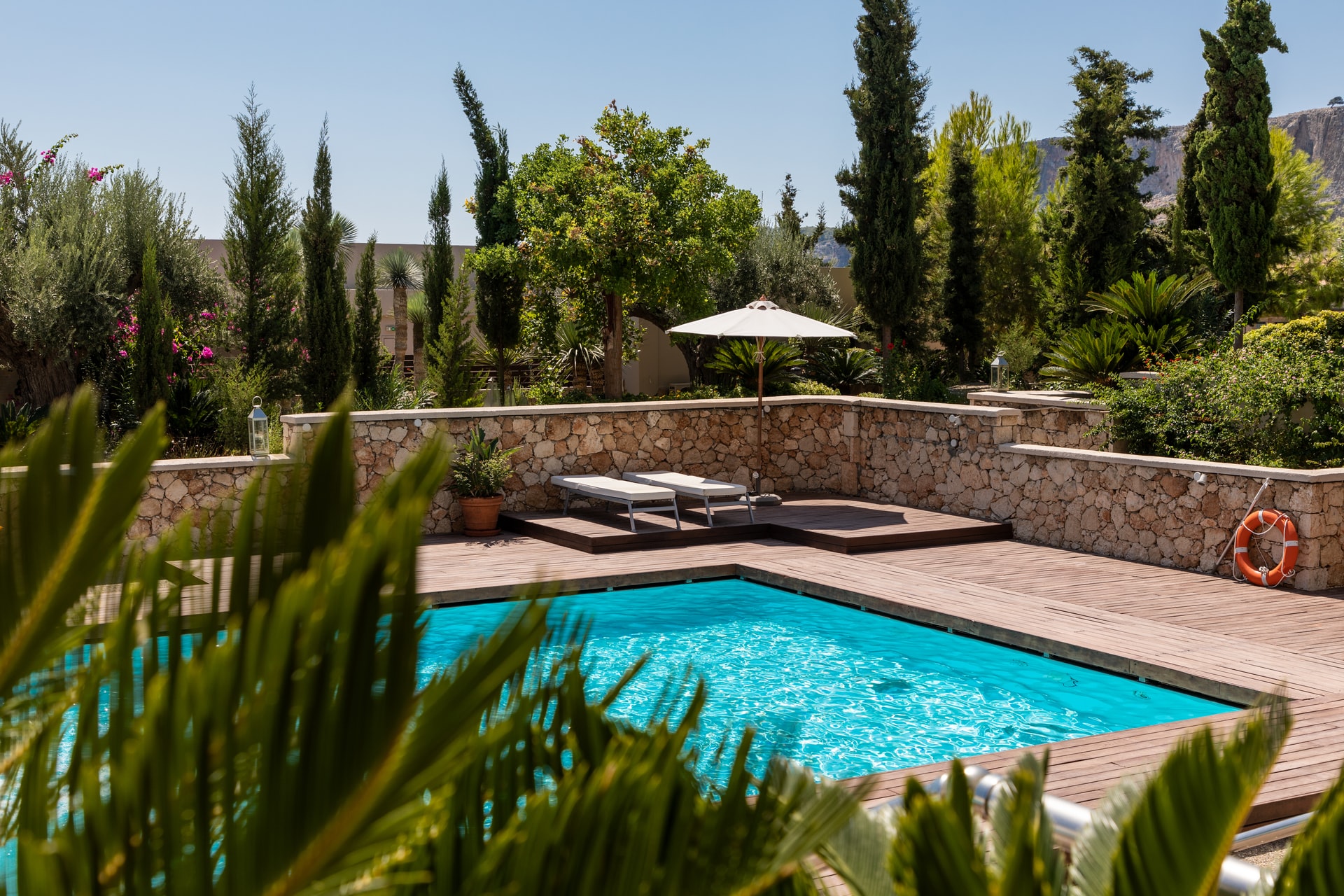Nothing feels good like having a swimming pool in your backyard, even if you’re not a devoted swimmer. It makes you and your family enjoy summer days just like you’d on the beach. A pool comes with several fun activities that you won’t want to miss.
An inground pool is one of the most popular options for homeowners for a good reason. Unlike an above-the-ground pool, this pool type is a lifetime investment, of course, if you find the right pool builder.
You might be asking yourself, how much does an inground pool cost? The amount of money you’ll spend on this type of pool entirely depends on several factors, like size, design, the material used, and location.
Generally, the average cost of an inground pool is anywhere between $28,000 to $55,000, but sometimes up to $72,000 for additional features and customizations. Custom features like splashing waterfalls, pool lighting, and hot tubs can skyrocket inground pool costs.
What is Considered an Inground Pool?
As the name suggests, an inground pool is a solid, permanent fixture built on the ground. However, unlike an above-ground swimming pool, a ground pool is designed to last for years or decades. For this reason, it’s ideal for anyone who plans to reside in their current home for an extended period.
Typically, inground pools are built using concrete, but you can choose the pool material that suits your needs. You can also add different finishes depending on your preferences. Adding things like waterslides, majestic fountains, surrounding hot tubs, and colorful lights can improve the aesthetics of your backyard oasis.
A ground pool is by far the most common pool type and comes in all sorts of sizes and shapes. The bigger the size, the more the cost and additional maintenance expense. Either way, nothing beats a beautiful backyard oasis.
Will Adding a Pool Increase the Value of Your Home?
The short answer is yes. Adding a pool will boost the value of your home.
Traditionally, most home improvement projects increase a home’s value because they are selling points in the real estate industry. However, the amount of value a pool can add to your home depends on various factors, such as the type of material used (concrete, vinyl, fiberglass), size, and location.
According to HouseLogic, a swimming pool can boost the value of your home by 7% under the right circumstances, while HGTV suggests that an inground concrete pool can potentially add 5 to 8 percent to your home’s value.
If you’re planning to have a pool in your backyard, consider hiring a professional appraisal to determine if a pool will add any value to your home based on your location.
Factors that Affect the Cost of Inground Pools
The overall cost of installing an inground pool depends on various factors, including:
1. Size
The most common factor that will affect the overall cost of a pool is size. 一 The larger the size of the pool, the higher the cost. As your swimming pool size increases, you’ll spend more on materials required to build the pool and onsite. Other things, such as the depth of the pool, also contribute to the total costs.
2. Location
Geographic and local location can affect inground pool costs. The location of your home determines the price of materials needed and labor costs. For example, if you live in the northern states, you’ll pay 15 to 20% more than other states like Texas and Florida. Generally, building a pool in states with a higher cost of living is expensive.
3. Type/Material
The material used to build a swimming pool contributes to the final cost. The most popular types of materials used to install an inground swimming pool are:
- Concrete: Also referred to as gunite or shotcrete, concrete liner pools are the most common kind of ground pool. They’re durable and customizable according to your needs. The only downside of concrete pools is that they’re the most expensive types and come with high maintenance costs.
- Vinyl: Unlike concrete pools, pools constructed with vinyl liners are cheaper. Plus, you can do it yourself without spending additional costs on a pool contractor. Vinyl liner pools, however, don’t last long and can rip due to their flexibility.
- Fiberglass: Finally, fiberglass liner pools are relatively inexpensive compared to vinyl liners. They also take the shortest time to install, typically two to three days, and have low maintenance costs since they use fewer chemicals. On the downside, fiberglass liner pools are not customizable.
4. Pool Features
Extra features, such as deck installation, lighting fixtures, slides, fountains, and any other add-ons, can skyrocket the overall cost of a pool. The final cost will vary depending on your preferences and needs.
5. Filters, Pumps, and Heating Systems
If you live in a cold area, a heated pool is probably what you need, which comes at an extra cost. Installing a pump pool heater will cost you anywhere between $1,500 and $4,000.
6. Labor Costs
Labor costs vary based on the type of material. Concrete pools, for example, take a longer period to install than vinyl and fiberglass liners, translating to high labor costs. Additionally, labor costs differ depending on the state and geographic location. Areas with a high cost of living tend to charge higher labor costs than regions with a low cost of living.
7. Permits and Taxes
Many things contribute to an inground pool cost, including permits and taxes. A building permit is a crucial requirement for most cities to install a ground pool. The purpose of the permit is to ensure that the pool meets local building codes. The cost of building permits varies but is generally $500 to $1,800.
Installing a new pool in your home could also increase property taxes.
Average Cost of an Inground Pool per Square Foot
The major factor contributing to an inground pool’s cost is the material. Here’s a quick cost guide of a ground pool based on material.
- Concrete/gunite/shotcrete): The initial cost of an inground concrete pool is between $30,000 and $50,000. However, there are long-term costs of up to $40,000 that come with maintaining a concrete pool. For example, replastering and acid washing consume a lot of energy and chemical treatments.
- Vinyl: Installing a vinyl pool can cost you $20,000 to 40,000, with maintenance costs over a decade ranging between $11,000 and $17,000. Since vinyl liner pools are easy to clean and you can DIY, their maintenance costs tend to be relatively low.
- Fiberglass: To have a fiberglass pool up and running, you need between $20,000 to $36,500. The good thing with fiberglass pools is that they require no special requirements to clean and maintain the shell. For this reason, upkeep ranges between $5,000 and $15,000.
Where Can You Get the Funds to Build an Inground Pool?
Owning a pool is probably one of the dreams of many homeowners. A gorgeous backyard oasis can offer incredible home relaxation during summer. But if you don’t have enough money to install an inground pool, it can be challenging to have your dream pool.







